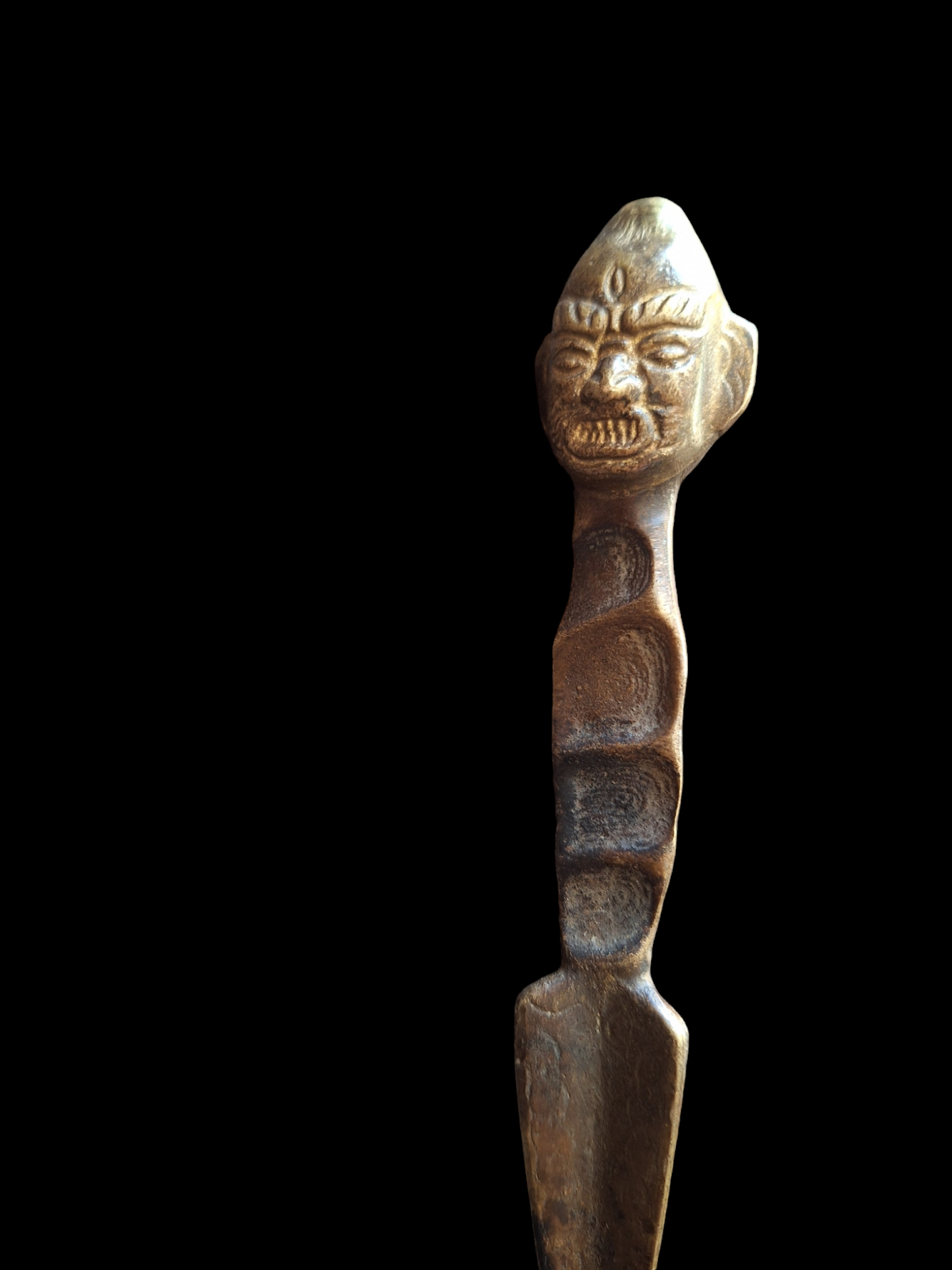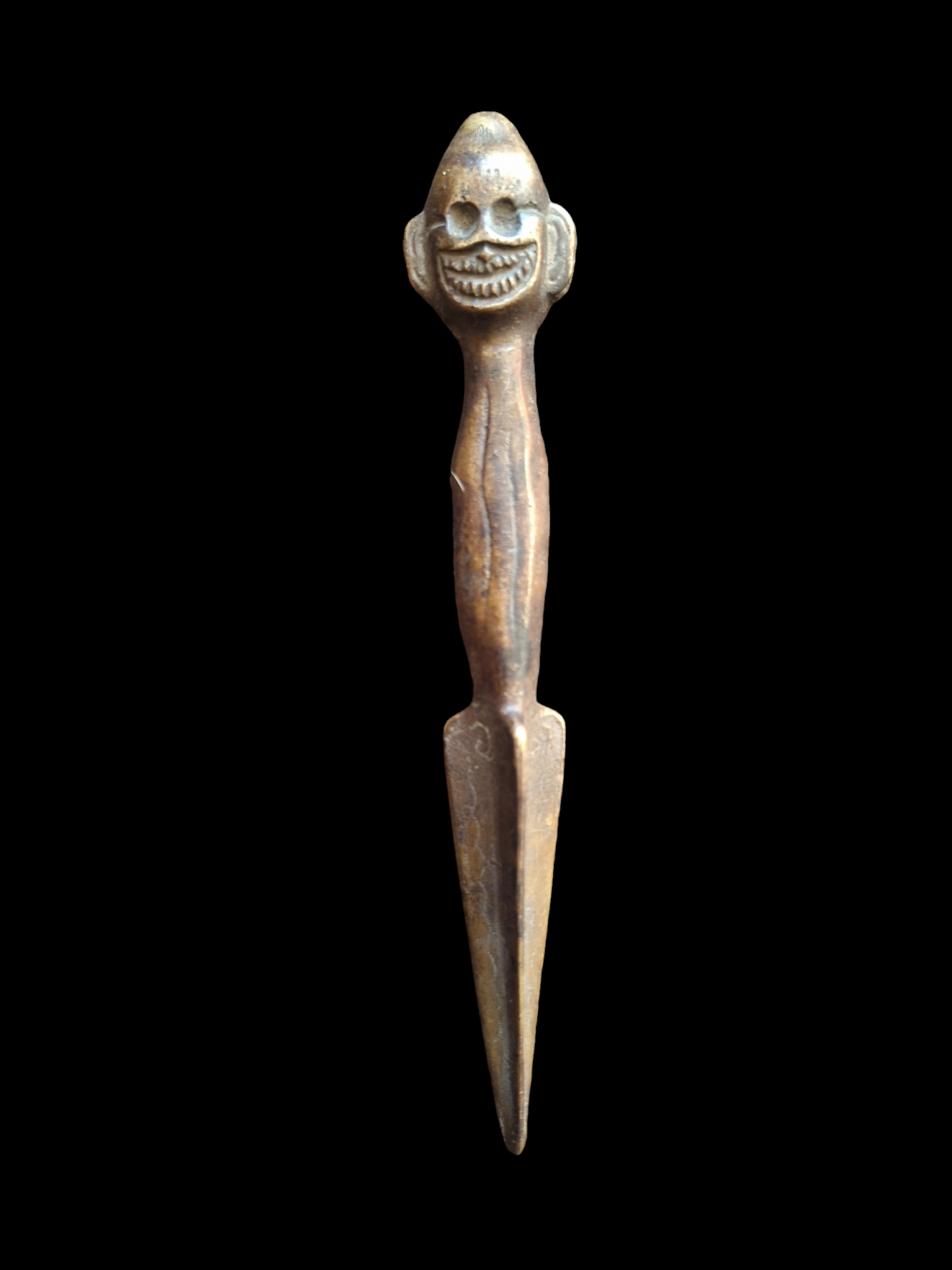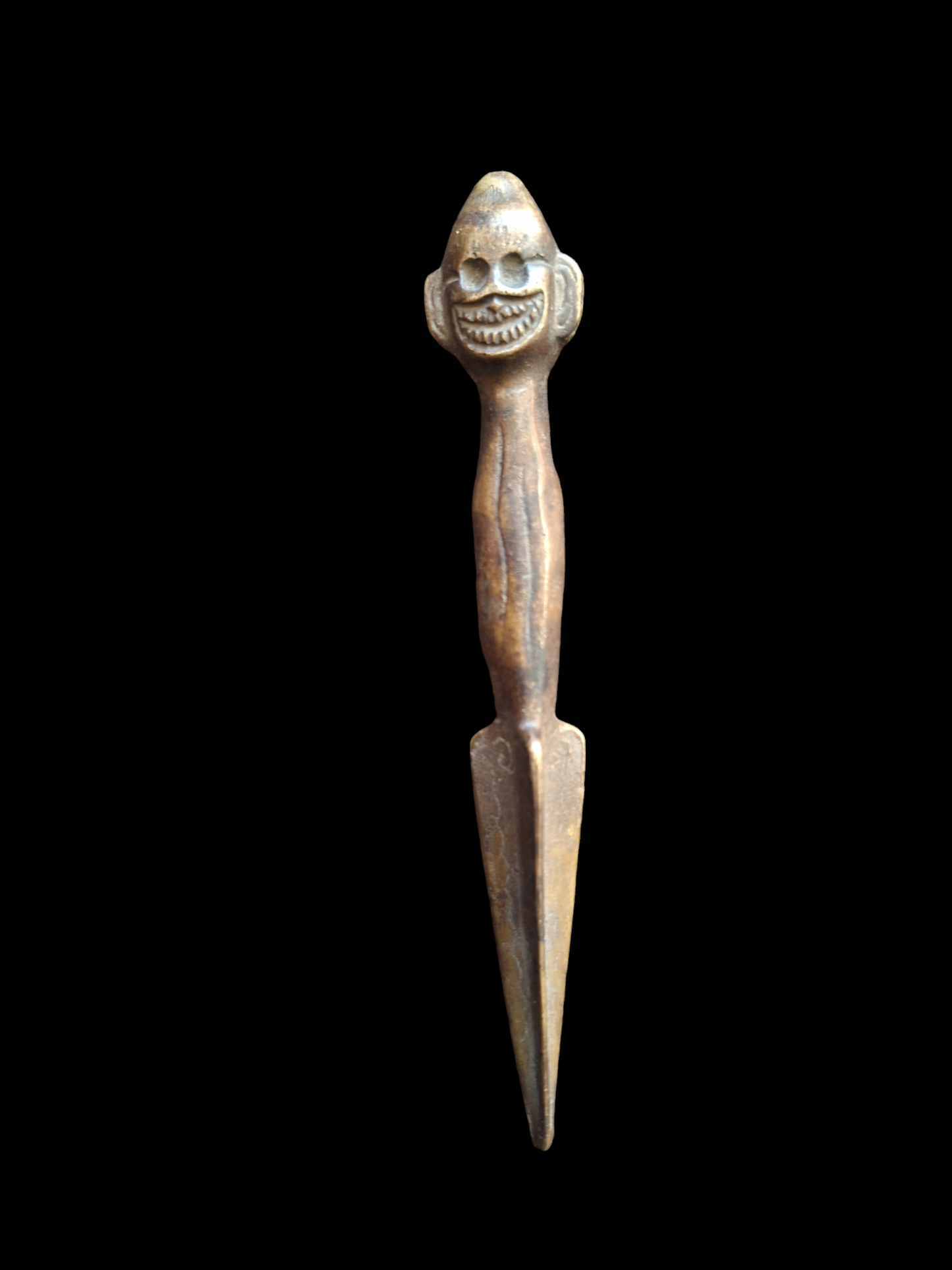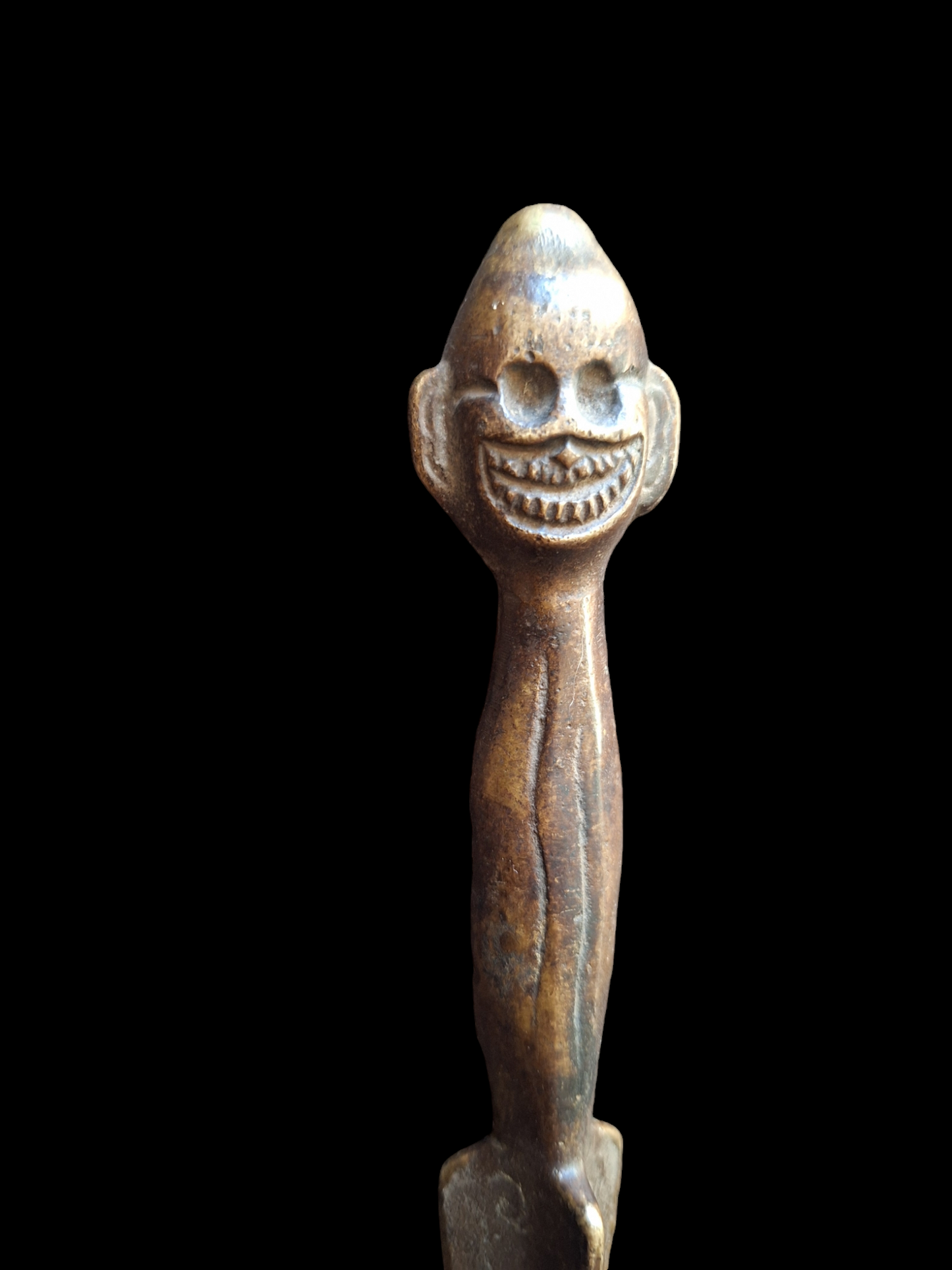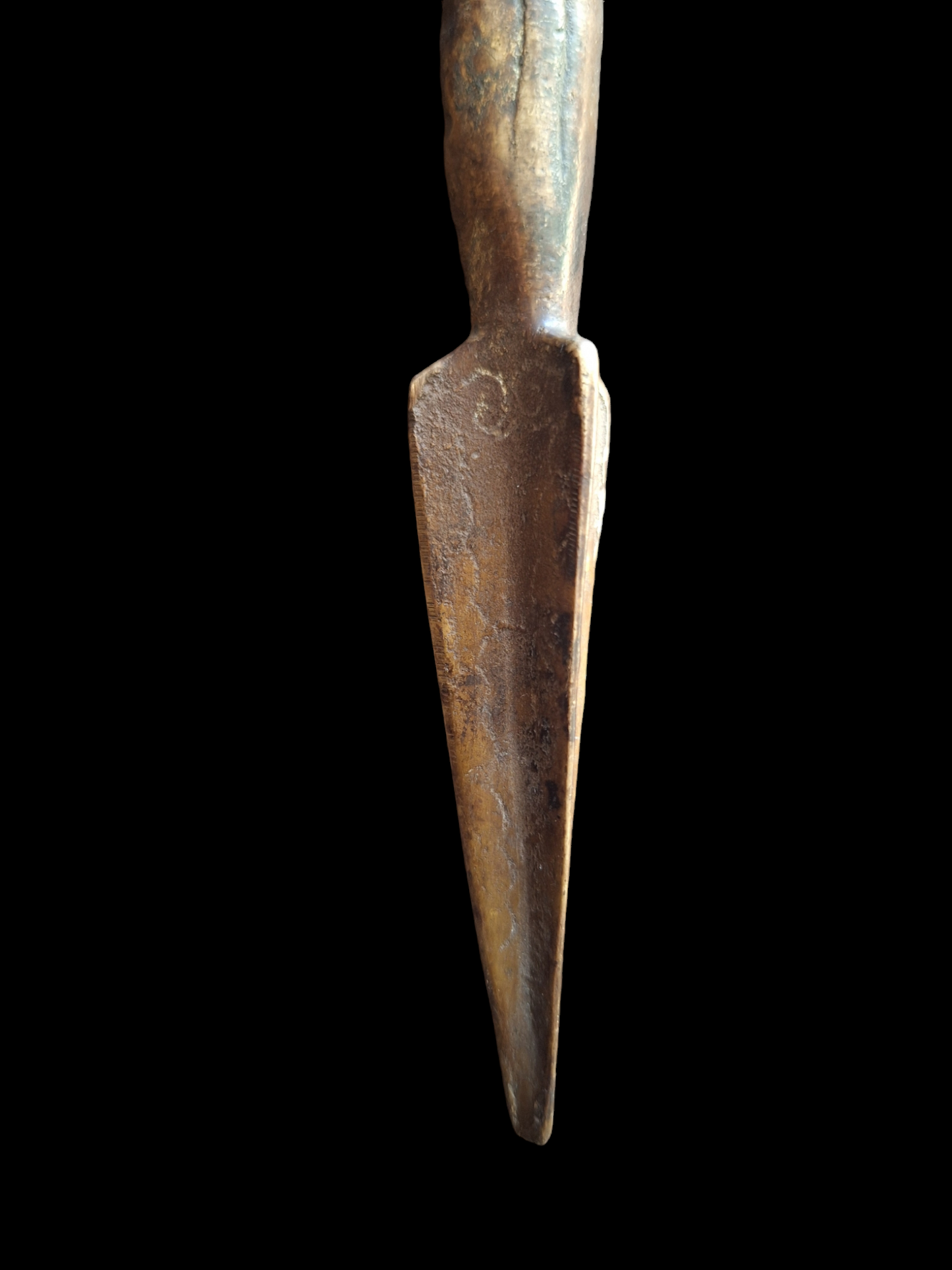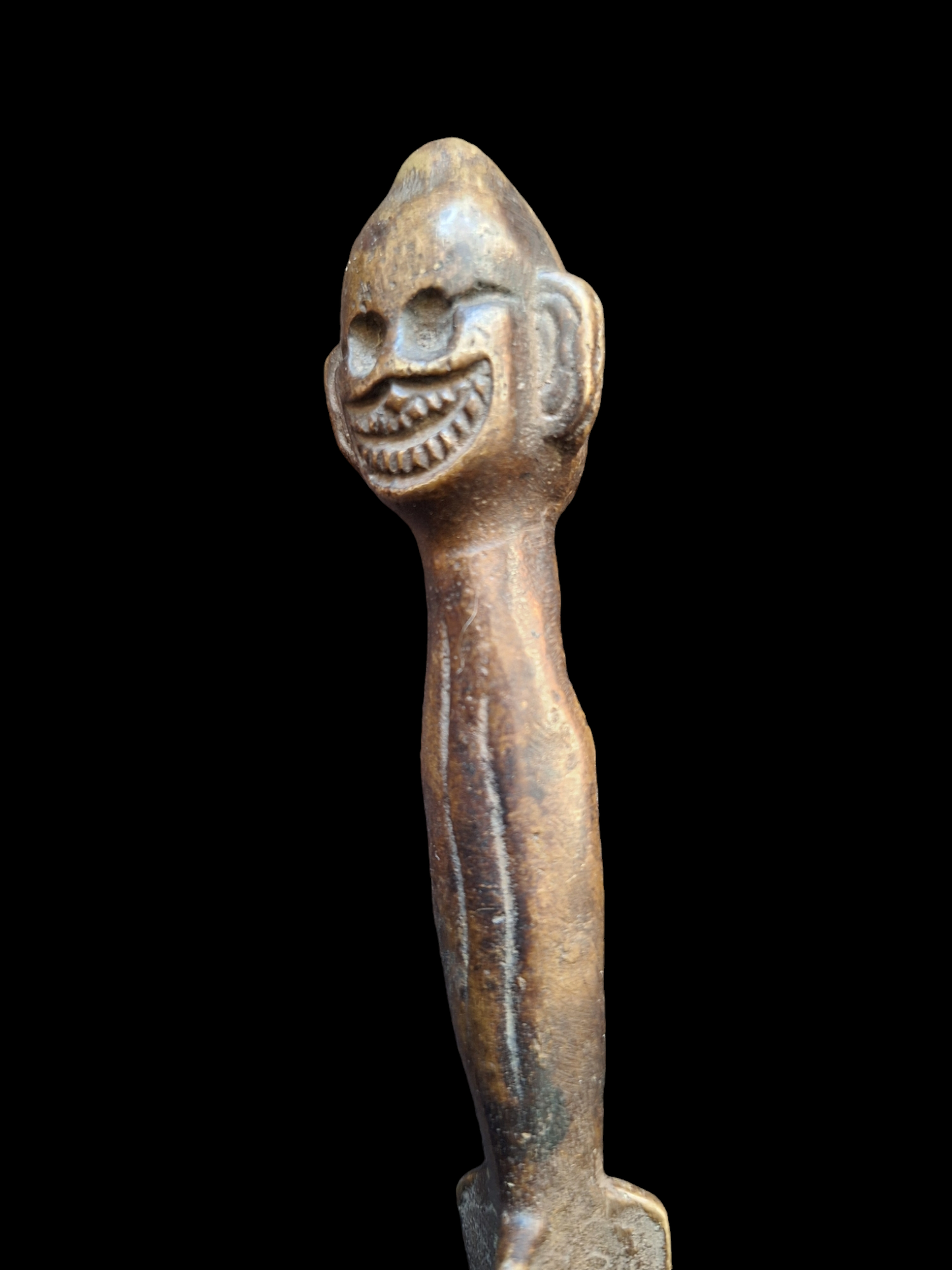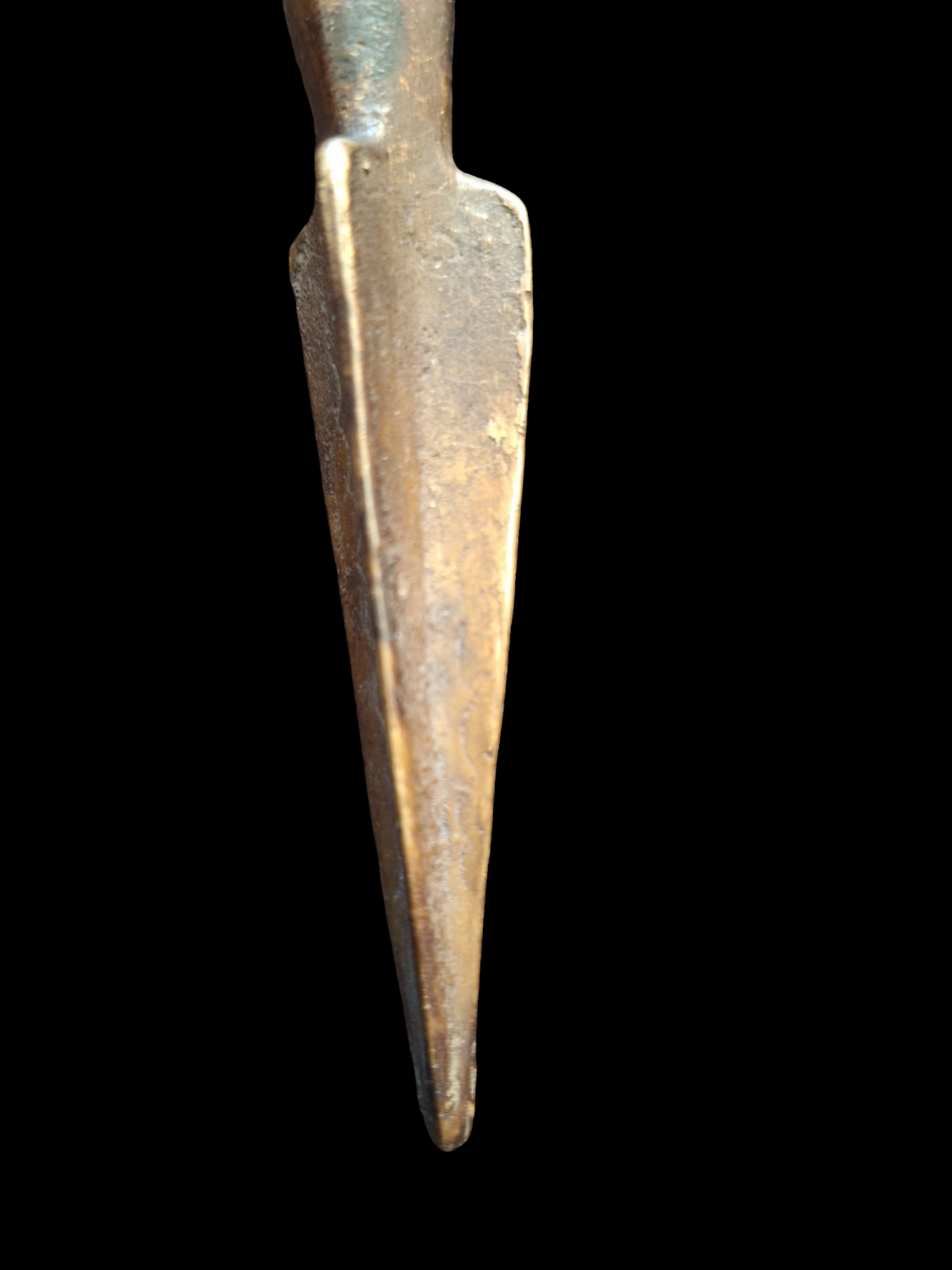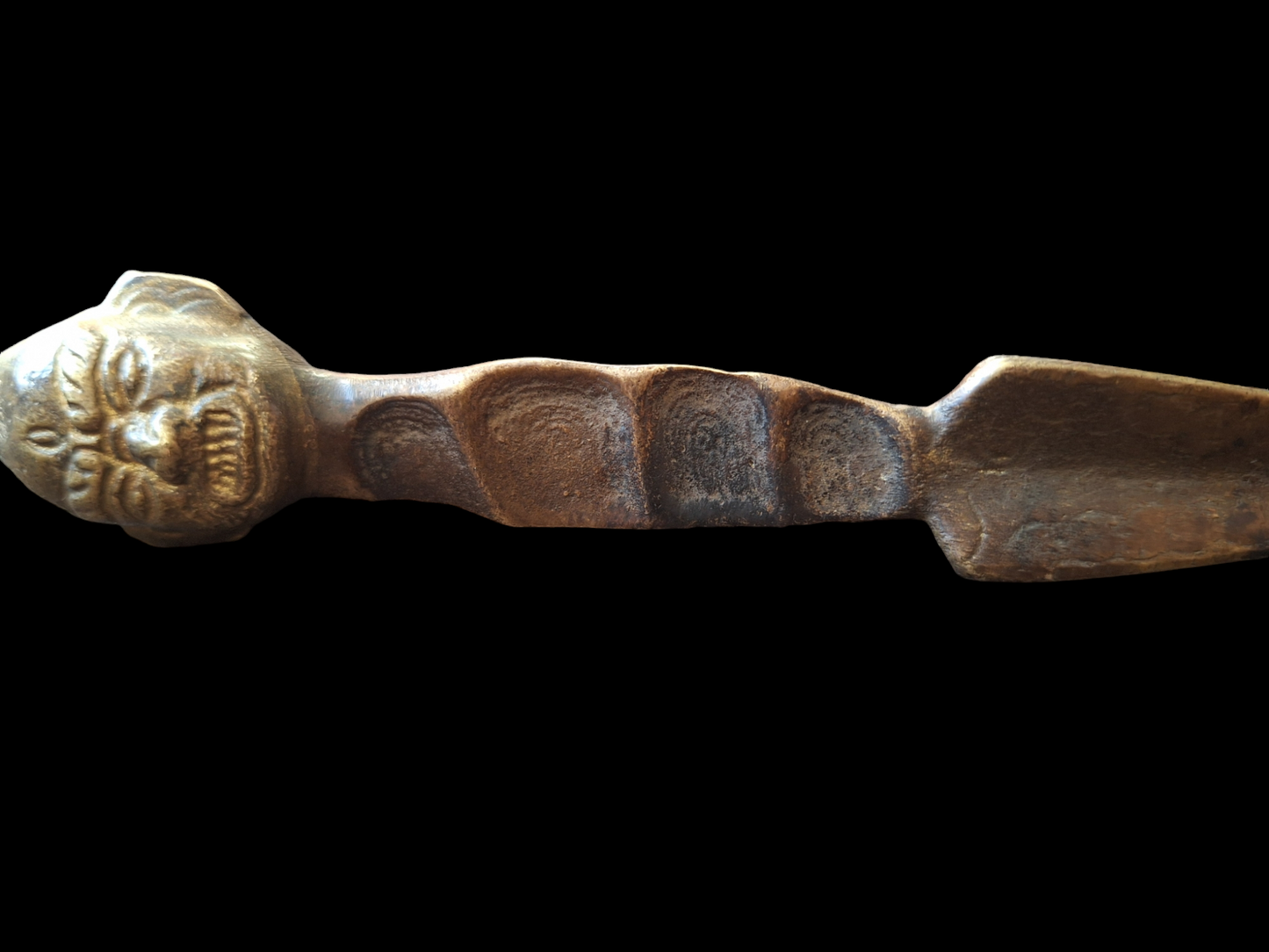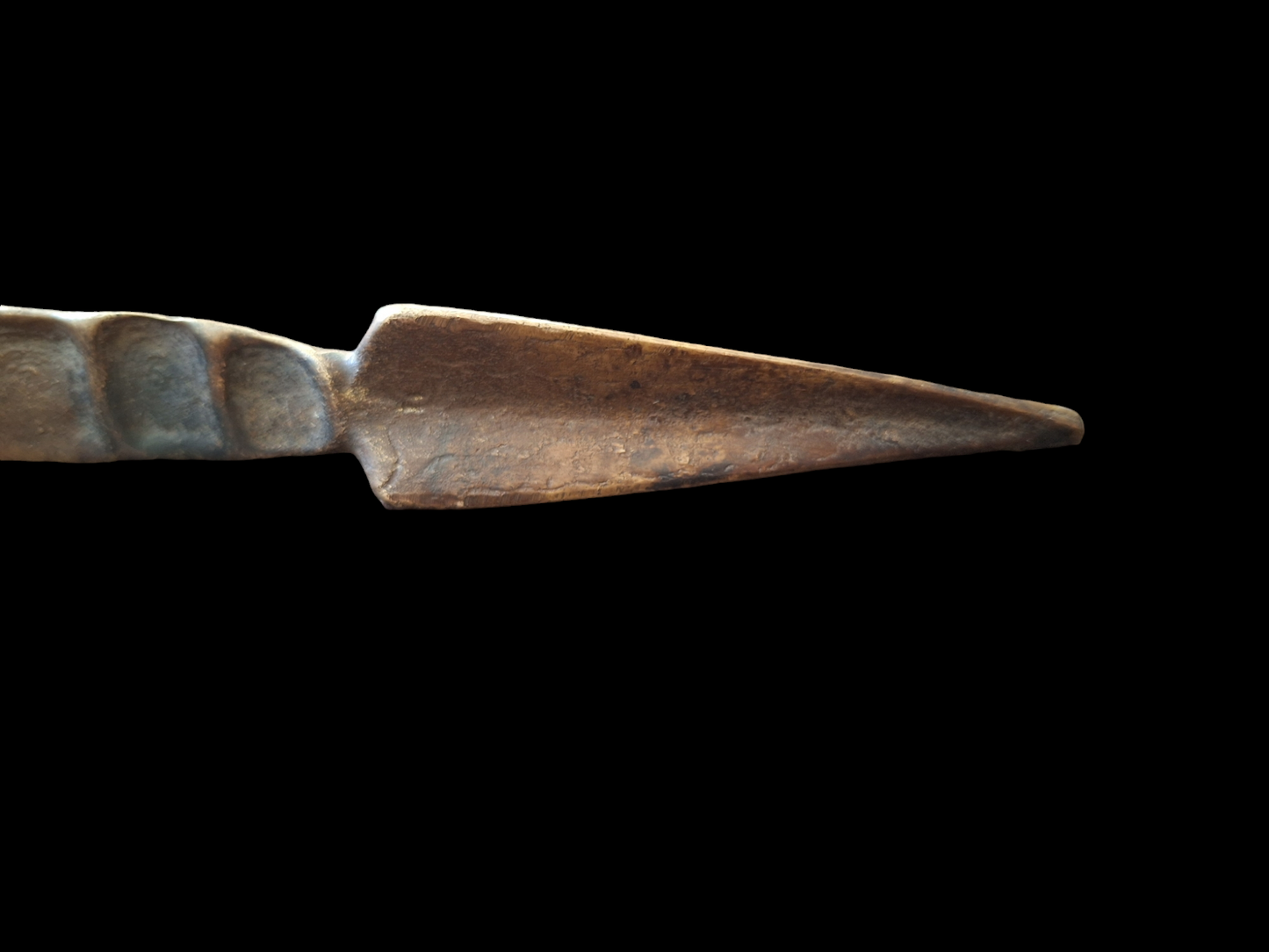Seawolf Shop
Antique Nepalese iron phurba
Antique Nepalese iron phurba
Couldn't load pickup availability
Share
This phurba is unique in its appearance. It is made from heavy iron in a typical, traditional style that is mostly found in the Himalayan Solu Khumbu region, near Mount Everest. The handle shows a double face; on the one side the guardian and owner of this phurba; Vajrakilaya (or Dorje Phurba), a wrathful form of the Buddha Vajrasattva. And on the other side a Citipati face; a skeleton face, which is part of the (especially) vajrayana Buddhist imagery. Citipati are associated with the cemeteries and charnel grounds and represent profound lessons about mortality, impermanence, the cycle of life and death, and freedom from samsara.
The middle area of the phurba shows an intriguing depiction of finger prints.
This phurba has a length of 17 centimeters and weighs 139 grams. Unique and rare piece, only one available.
Read more about the general and specific design and symbolism of the phurba in the general description of this webshop-collection.
